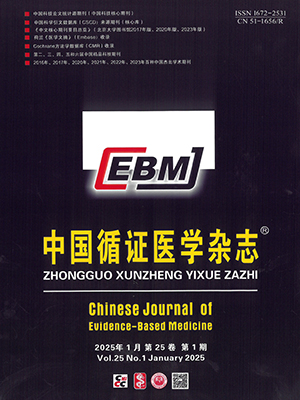| 1. |
尹秀茹, 裴凌.硫酸镁对全麻术后疼痛和并发症影响的Meta分析.中国循证医学杂志, 2012, 12(3): 334-340.
|
| 2. |
Unlugenc H, Ozalevli M, Gunduz M, et al. Comparison of intrathecal magnesium, fentanyl, or placebo combined with bupivacaine 0.5% for parturients undergoing elective cesarean delivery. Acta Anaesthesiol Scand, 2009, 53(3): 346-353.
|
| 3. |
Yousef AA, Amr YM. The effect of adding magnesium sulphate to epidural bupivacaine and fentanyl in elective caesarean section using combined spinal-epidural anaesthesia: a prospective double blind randomised study. Int J Obstet Anesth, 2010, 19(4): 401-404.
|
| 4. |
McCarthy CL, Sinha A, Katz J. A qualitative systematic review of the role of N-methyl-D-aspartate receptors antagonists in preventive analgesia. Anesth Analg, 2004, 98(5): 1385-1400.
|
| 5. |
Shimosawa T, Takano K, Ando K, et al. Magnesium inhibits norepinephrine release by blocking N-type calcium channels at peripheral sympathetic nerve endings. Hypertension, 2004, 44(6): 897-902.
|
| 6. |
Ozalevli M, Cetin TO, UnlugencH, et al. The effect of adding intrathecal magnesium sulphate to bupivacaine-fentanyl spinal anaesthesia. Acta Anaesthesiol Scand, 2005, 49(10): 1514-1519.
|
| 7. |
Ko Sh, Limh R, Kimd C, et al. Magnesium sulfate does not reduce postoperative analgesic requirements. Anesthesiology, 2001, 95(3): 640-646.
|
| 8. |
Sun J, Wu X, Xu X, et al. A comparison of epidural magnesium and/or morphine with bupivacaine for postoperative analgesia after caesarean section. Int J Obstet Anesth, 2012, 21(4): 310-316.
|
| 9. |
Simpson JI, Eide TR, Schiff GA, et al. Intrathecal magnesium sulphate protects the spinal cord from ischaemic injury during thoracic aorta cross clamping. Anesthesiology, 1994, 81(6): 1493-1499.
|
| 10. |
Takano Y, Sato E, Kaneko T, et al. Antihyperalgesic effects of intrathecally administered magnesium sulphate in rats. Pain, 2000, 84(2): 175-179.
|
| 11. |
Goodman EJ, Haas AJ, Kantor GS. Inadvertent administration of magnesium sulphate through epidural catheter: report and analysis of a drug error. Int J Obstet Anesth, 2006, 15(1): 63-67.
|
| 12. |
Shoebi G, Sadegi M, Firazian A, et al. The additional effect of magnesium to lidocaine in spinal anaesthesia for caesarean section. Int J Pharmacol, 2007, 3(5): 425-427.
|
| 13. |
Ozalevli M, Cetin TO, Unlugenc H, et al. The effect of adding intrathecal magnesium sulphate to bupivacaine fentanyl spinal anaesthesia. Acta Anaesthesiol Scand, 2005, 49(10): 1514-1519.
|
| 14. |
Arcioni R, Palmisoni S, Tigano S, et al. Combined intrathecal and epidural magnesium sulfate supplementation of spinal anesthesia to reduce post-operative analgesic requirements: a prospective, randomized, double-blind, controlled trial in patients undergoing major orthopedic surgery. Acta Anaesthesiol Scand, 2007, 51(4): 482-489.
|
| 15. |
Christopher L, Lionel D, Christoph C, et al. Magnesium as an Adjuvant to Postoperative Analgesia: A Systematic Review of Randomized Trials. Anesth Analg, 2007, 104(6): 1532-1539.
|
| 16. |
Kroin JS, Mc Carthy RJ, Von Roeenn N, et al. Magnesium sulfate potentiates morphine antinociception at the spinal level. Anesth Analg, 2000, 90(4): 913-917.
|




